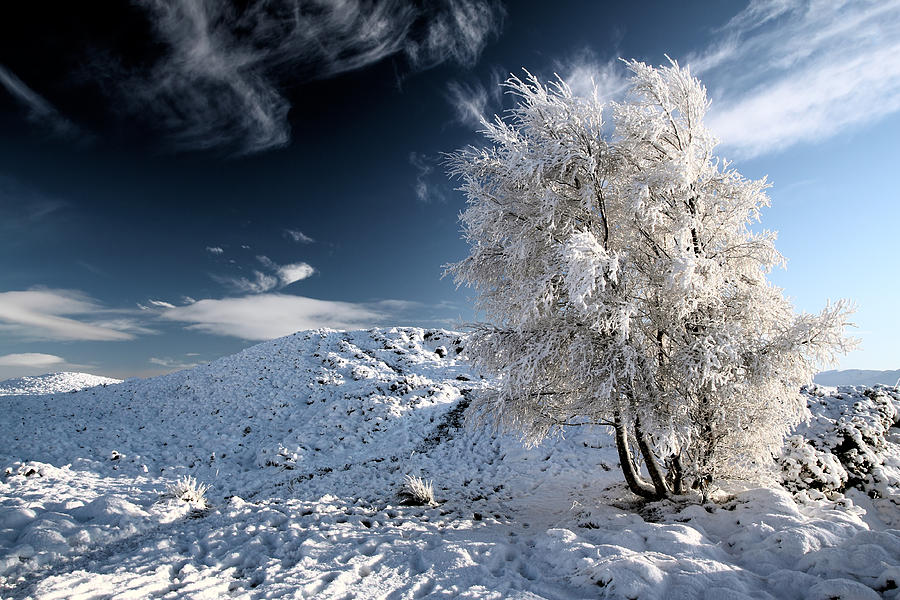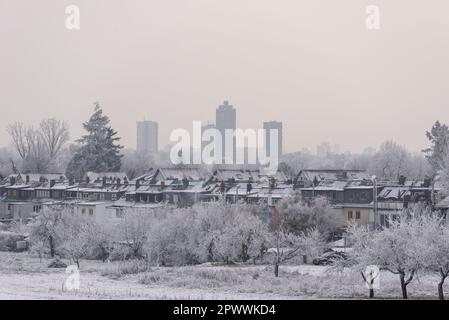
Then set your camera to Live View, zoom in on your LCD, and carefully adjust the lens focus ring until you get a perfect result! 4.
Winter landscape manual#
In the latter situations, I’d recommend switching your lens over to manual focus. Occasionally, however, you’ll run into a situation where your scene features very little contrast or the only clear contrast exists far behind your main subject. As long as you can find some part of your shot that’s contrasty – a few rocks, a lone tree, or a river – you’ll manage to capture a photo that’s both in-focus and well-composed. Simply set your camera to its AF-S (or One-Shot AF) setting, set the AF point to the center of the frame, half-press your shutter button to lock focus on an area of clear contrast in the scene, then recompose the shot. First, you can try using the focus-and-recompose technique. When that happens, you have two options, both of which are generally effective. Don’t be afraid to use manual focusĪs I mentioned in the previous tip, winter landscapes can be intensely white – and when you’re dealing with monochromatic scenes, your camera will often struggle to lock focus. Just find a dominant color or tone in the otherwise white landscape, then use careful composition techniques to make it a standout focal point. Maybe there’s an autumn leaf laying on top of a thin layer of snow, or maybe you can see a few skiers wearing red jackets, or maybe you’re standing before a dark mountain surrounded by white. Make sense?īy the way, I find red color contrast to be particularly pleasing in winter landscape scenes, but you can really search for any dominant color or tonal variation. So you can just go around with your camera, searching for an eye-catching element or two. Happily, contrast is easy to find on snowy days because it’ll catch your eye just the same as it’ll catch a photo viewer’s eye. Without it, the scene would lack a focal point and the viewer’s eyes would have no place to rest, which would make for a bad shot. The red color is what makes this picture interesting. Here’s an example of color contrast, where I found a red house against a white and gray background: You look for contrast – either color contrast, where you find a splash of red, blue, or green against the white – or tonal contrast, such as a splash of darkness against the bright snow. And when everything is white, it’s quite challenging to find a compositional focal point as nothing really catches the eye. Look for contrast to make those winter compositions stand outĪfter a few days of heavy snowfall, the landscape will be completely white: white trees, white lakes, white mountains, and (normally) a white sky.

That way, you can capture the photos you want, but you don’t risk yourself or your gear in the process. Instead, you should wait until the snow stops or head out in advance. If you plan to photograph a snowy mountain scene from a high altitude, you’ll want to avoid driving in during a blizzard. You should also watch the weather for safety reasons. It can help to observe the snowflakes before setting off to make sure they’re reasonably large and are falling sufficiently fast otherwise, you may struggle to capture the kind of moody winter landscape you’re pursuing.
Winter landscape how to#

In this article, I share ten critical winter landscape tips so you can start capturing beautiful snowy landscapes like the pros.


Winter landscape photography is a lot of fun – and it doesn’t have to be hard, either, assuming you know the right techniques!


 0 kommentar(er)
0 kommentar(er)
